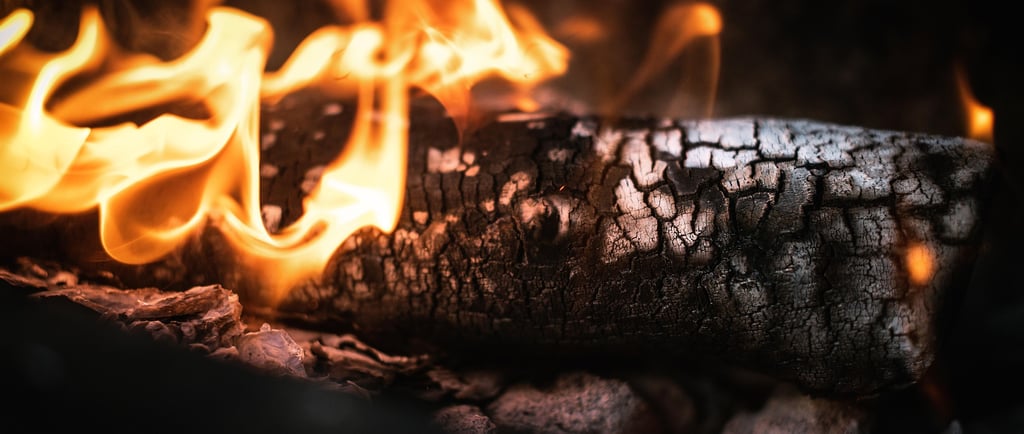Our Ancestors Gift for Us 🔥Taming the Dancing Fire
🔥 A follow-up story that glows in the History Album’s Early Human Beings chapter—and quietly lights the Fundamental Needs and Migrations chapters. ✨ It invites children to travel back in time, when our ancestors watched, wondered, and learned to make and keep fire. As we step into the glow of early hearths, children discover what this new skill brought: safety, warmth, cooked food, hardened tools, and light—plus evenings of songs and stories. 🔥🍲⚒️🗣️ Mastering the flame gave people courage to journey into colder lands, settle new places, and share ideas and materials along the way. ❄️🧭🌍 With a torch in hand, this story invites children to wonder : Which fundamental needs did fire support? And what clever tools sparked a flame on purpose—before matches and lighters? 🪨⚡🏹
HISTORY STORIES
8/26/20254 min read


Here is a candle. 🕯️ I’ll light it now… flick! ✨ Watch the dancing flame 🔥—wiggle, wiggle, wiggle. If it were bigger, you’d feel its warm breath on your cheeks 😊. As we watch this tiny fire, let’s time-travel ⏳—back before candles—when this dancing flame was untamed and mysterious to our great-great-great (many greats!) grandparents 👵🏽🧓🏿👶.
Back then—before farming 🌾, before writing ✍️, before cities 🏙️ , more than two million years ago —early hominins saw fire born in nature: same as we observe today: lightning in the grass 🌩️ and fire bubbling from the earth itself—volcanoes 🌋. Imagine their eyes, wide with awe: “What is that? Is it a god? It comes and goes...”
In the open African grasslands where our ancestors came from, plants burst into flames on very hot days ☀️🔥. People watched fire move like a living thing—hisssss 🐍, roarrr 🦁, whisper… 🌬️. After rain 🌧️, flames faded; in dry winds 💨, they ran. They observed the fire and the animals that changed their behavior near the hot flames: some flew toward smoke for an easy snack 🐦🍽️, others followed the fire’s edge 🐺🚶. Maybe people tried to bring fire back to their caves 🕳️ or early camps ⛺ to understand it better. We wonder why… and our ancestors wondered too 🤔✨.
Do you remember—at the end of the Timeline of Life—the new creature with three special gifts: the hand, the wondering brain, and the special heart? Yes. But even with those gifts, we arrived under-equipped: no thick wolf fur 🐺🧥 (just a polite sprinkle of hair 😅), no tiger-style mega-teeth 🐯🦷 (more like school-lunch teeth 😬), and no claws 🐾—just clever hands 👐. So fire became our warm blanket and bright shield —helping small, unequipped humans feel big and brave. 🔥🛡️💪
Our clever ancestors, maybe carried a burning stump or an ember (a small, glowing coal) 🔴—into the center of their shelter. There they gathered 👨👩👧👦, felt warmth 🧣, and noticed that prowling predators didn’t like the dancing, heat-shimmering light 😼➡️🔥. Good news for team human! 🙌
Perhaps, after a grassfire, someone found an animal already cooked 🍖 and dared a taste 😮👉😋. That could have sparked the very first cooking idea. Fire gave more than warmth and protection—it gave food that was tastier 😋 and easier to chew 🦷.
So our ancestors began to experiment (carefully… and sometimes hilariously 😅): small sticks first 🪵➡️🪵, big sticks later, not under the dry bush 🚫🌿, and don’t nap where the sparks land—ouch! ✨➡️🧢. They discovered what keeps a flame dancing 💃🔥 and what makes it rest 😴🔥. Rain made warmth vanish 🌧️➡️🥶. Covering the flame took its breath away 🫢➡️🕯️. These discoveries were precious 💎, so adults passed them to children: how to feed a fire safely 🪵➕🔥, how to keep it going without letting it grow wild and untamable 🐉.
Over time, people started choosing safer places 🧹🪨, clearing ground, keeping water or sand nearby 🪣🧯, and tending small, steady flames 🔥🙂. Nights grew longer and more peaceful 🌙😌. Stories, songs, and plans filled the circle 🗣️🎶🗺️. Friendship crackled right along with the wood 💞🔥. For example, in a place called Qesem Cave in Israel, people kept a central hearth they came back to again and again—archaeologists found a big round fire spot with ash layers stacked like book pages, plus burned bones and flint nearby. It’s like a Stone Age kitchen island! 🔥🍖🪨
If we walked together through the past in the caves of our ancestors 👣, we’d find more fire clues—layers of ash and burned bone—hints that early people knew fire 🗺️🪓 🧑🔬🪨.
Cooking changed everything. Hard roots became cozy soups 🥔➡️🍲—warm and delicious 🤗—so even small children and elders could share the same stew 👶👵. Some scientists, studying the fossils of Homo erectus (a human ancestor larger than earlier hominins), think cooking helped bodies and brains grow over time 🧠💪. Learning to control fire also let people experiment and invent new things 💡.
Mud baked into bricks 🧱 for better homes 🏠. Clay fired into pots, plates, and little sculptures 🏺🍽️🎭. Glowing hearths and simple ore turned into tools that could cut, dig, and build ⚒️⛏️🪚. As centuries rolled by, people carried the light from the dancing flame with them—animal-fat lamps in caves 🪔, oil lamps and torches in ancient towns 🏛️—so evenings could be brighter and warmer.
Humans have tamed and used fire for millions of years 🗓️🔥. About 200 years ago, most homes lit nights with candles or oil lamps and kept warm by hearths or wood stoves 🪔🔥; about 100 years ago , many cities had electric lights, but lots of villages still used lamps and cookfires 🌆🪔; even 50 years ago , millions still cooked or heated with flame. The story still continues today—people still gather to sing songs 🎵, tell stories 📖, and share food cooked over dancing flames 👨🍳🔥👩🍳.
Long ago, fire helped hominins like Homo erectus explore colder lands ❄️🧭 and see danger sooner 👀. It powered new tools and crafts—kilns, forges, ovens; glass, bricks, metals 🧪🧱⚙️. It transformed food—making it safer to eat and giving strength for longer journeys 🍠🍲🎒. Fire even warmed our language and art: gathered around the flames, people used charcoal to draw what they saw, thought, dreamed, and wondered about 🖤🖼️. They left messages for those who weren’t there at that time.Some cave paintings have lasted over 40,000 years. By taming the fire, our ancestors gave us a precious gift—a gift from nature itself. 🎁🌍
A gift that asks for our wisdom 🧠💚. We must remember the needs of the dancing flame—its three friends: heat, coming from a spark ⚡, fuel, like wood 🪵, and air 💨. We keep open flames only where they belong ✅, with water and adults nearby 🪣👀. It gives us light and warmth , it help us make experiments too.🌟
Fire is part of the story of humans—our story; now it’s our turn to be guardians of the dancing fire 🛡️🔥, protecting our homes, the forests, the glasslands, animals and our planet. 🌳🦌🌬️. 🌍.
I wonder… 🔥 What tools did our ancestors invent to start fire on purpose? Did they used stones that spark or friction drills 🏹🪵🪨⚡How did they carry fire on long journeys? 🔥
Other questions ot wonder aloud 💭
Which Fundamental Needs did fire support here? Food 🍲, Shelter 🛖 (warmth/light), Defense 🛡️, Clothing 🧣 (softening/curing hides), Transportation 🛶 (torches, pitch, night travel), and Spiritual Needs 🕯️
What was childhood like around the fire? What were children’s jobs—twig gatherer 🪵, ember watcher 🔴, water/sand keeper 🪣, story-rememberer 📖, singer 🗣️? Who taught the safety rules, and who kept night watch 🌙👀?
How archaeologists, read ash layers, heat-cracked stones, burned bones, charred seeds? How do they know how old that burned bone is?🧑🔬🪨🌱?
How do people today prevent wildfires and help the land heal afterward? 🚫🔥🌱🌳💧🦋
This story is adapted from the original story written by my trainer Carla Foster
With Montessori joy,
Vanina 😊

